Is KTM having the MotoGP season Aprilia should be having?
That is, perhaps, an overly simplistic way of looking at it, but the two programmes have always been linked somewhat in recent MotoGP history, having come in around the same time (Aprilia returning, KTM debuting) and having spent the formative years of their current iterations battling one another for the status of the fifth-best bike.
Those days are long gone, and now the KTM RC16 and the Aprilia RS-GP are the closest challengers to the refined Ducati Desmosedici – so duelling for second-best instead of fifth-best. And in every points category it is a duel KTM is winning fairly handily right now.
That state of play is not something pre-season testing had suggested – and, though KTM had clearly not uncorked anywhere near its actual early-season potential at that point and its riders, Jack Miller in particular, cautioned it had much more to come, it was also a self-admittedly imperfect preparation, compared to Aprilia’s stellar testing performance.
The actual race weekends, though, have been pretty amazing for KTM and middling for Aprilia. But was the pre-season more reflective of which of the packages is actually more formidable?
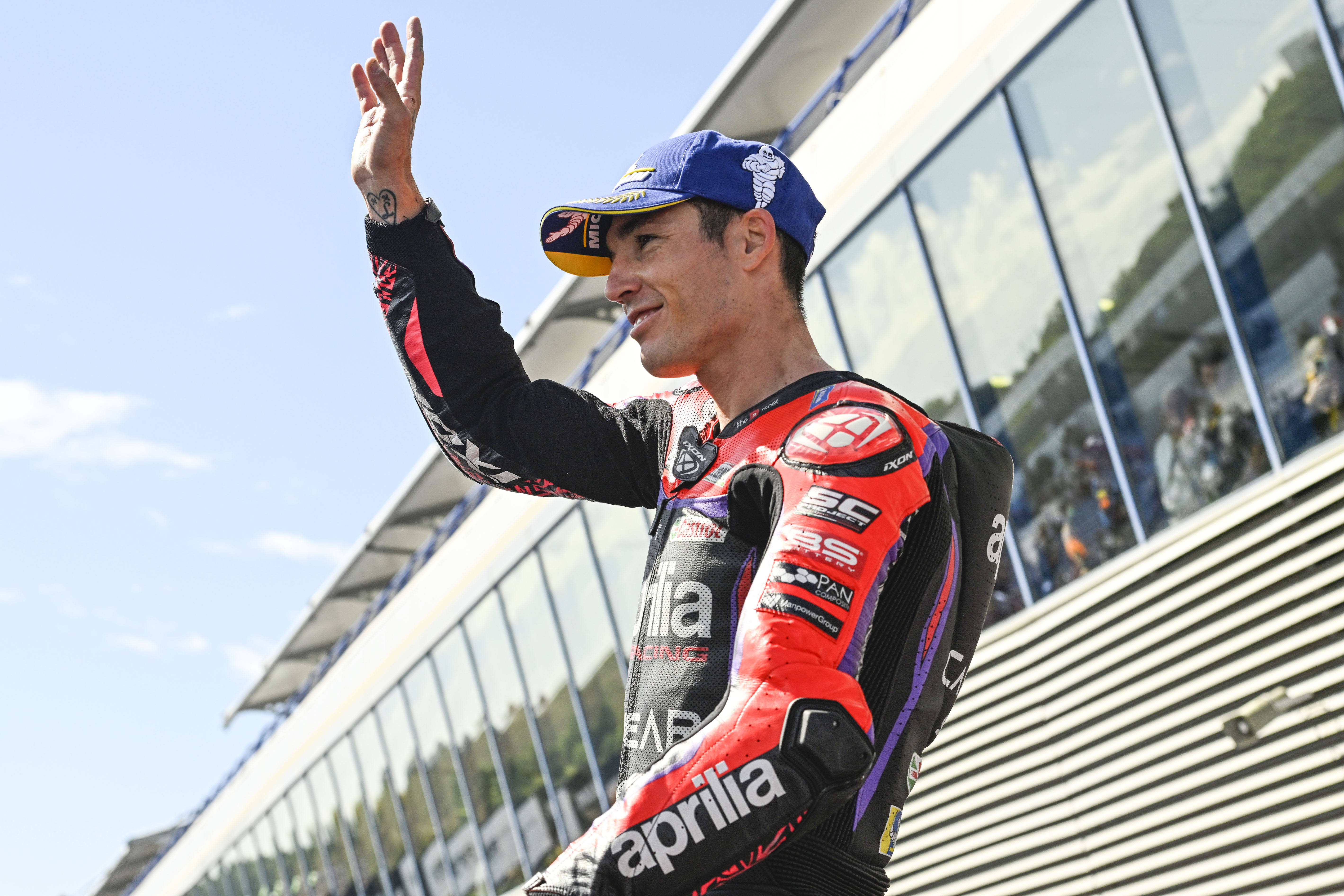
“The first thing I want to say is congratulations to KTM, the job they did is amazing,” said Aprilia rider Aleix Espargaro after the most recent race, the Spanish Grand Prix at Jerez.
“The riders – Jack, Brad [Binder] – and the whole team, it’s crazy what they’re doing.
“But my feeling is that my bike is better than them. So this is why I’m even more frustrated because they beat me with a worse bike, but their bike allowed them to be really aggressive on the race and the job they are doing is crazy.
“They understand better the concept of the tyre, the way of racing of 2023 and they are better than us.”
You can apply Espargaro’s words not just to Jerez but to the season so far. KTM has 14 points in hand over Aprilia in the constructors’ standings and 34 points of advantage in the teams’ championship. Its riders are third and fourth in the standings, compared to fifth and 13th for the Aprilia works duo.
Jerez was particularly striking, though. Aprilia was 1-2 in Friday practice, but a rain-affected qualifying took one of its riders, Maverick Vinales, out of the mix for pole. Then, polesitter Espargaro got gobbled up by the KTMs at each of the four starts – the sprint, the sprint restart, the grand prix and the grand prix restart.
“The easy thing is to say that the bike didn’t work today and the bike is not good, but it’s not true,” said Espargaro.
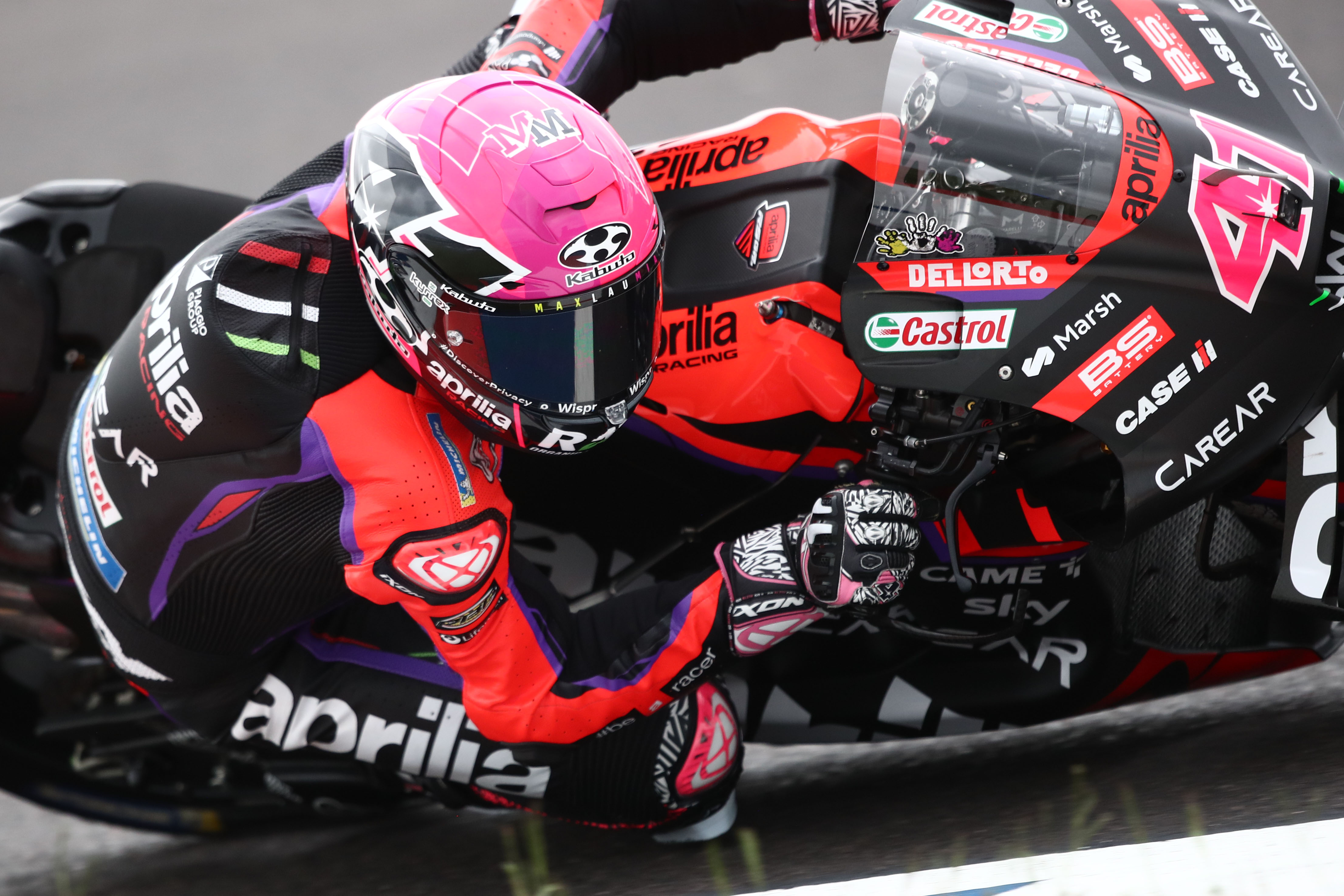
“I felt that I have one of the best bikes out there, I love my bike, it’s fantastic, I can be super fast. Actually I’ve been the fastest one again on Friday with the laptimes I did. But at the end it counts on Sunday – I cannot do my lines, I cannot race as I want, I lose the front all the time I get closer, the bike is not turning, the front tyre is a disaster.
“We have to understand if it’s aerodynamic, if it’s aerodynamic plus temperature or pressure of the front tyre.”
Average position in 2023, factory team
Combined FP1/FP2
Aprilia – 4.0
KTM – 10.1
Qualifying
Aprilia – 7.0
KTM – 9.6
Sprint
Aprilia – 6.5
KTM – 5.6
Grand Prix
Aprilia – 7.8
KTM – 7.7 (4.8 if Binder’s post-crash finishes are excluded)
Watching the KTMs dice with one another, and with the Ducatis of Pecco Bagnaia and Jorge Martin, in the sprint and main race at Jerez highlighted an impressive robustness the RC16 seems to possess in wheel-to-wheel action and running in the wake of a rival bike – something that affects everyone in modern MotoGP but perhaps affects the KTM less.
It sure does affect the Aprilia. “After four laps my front tyre was cooked already and I could not stop the bike and turn especially on the right side,” said Vinales, who basically let the front group go in the Sunday race at Jerez. “I had all the time all the alarms on the dashboard.”
Beyond that, both Espargaro and Vinales have looked pretty tentative making up places this season even when they do manage to run close behind a rival. “It’s about racing, overtaking and my bike today doesn’t allow me to do this,” said Espargaro.
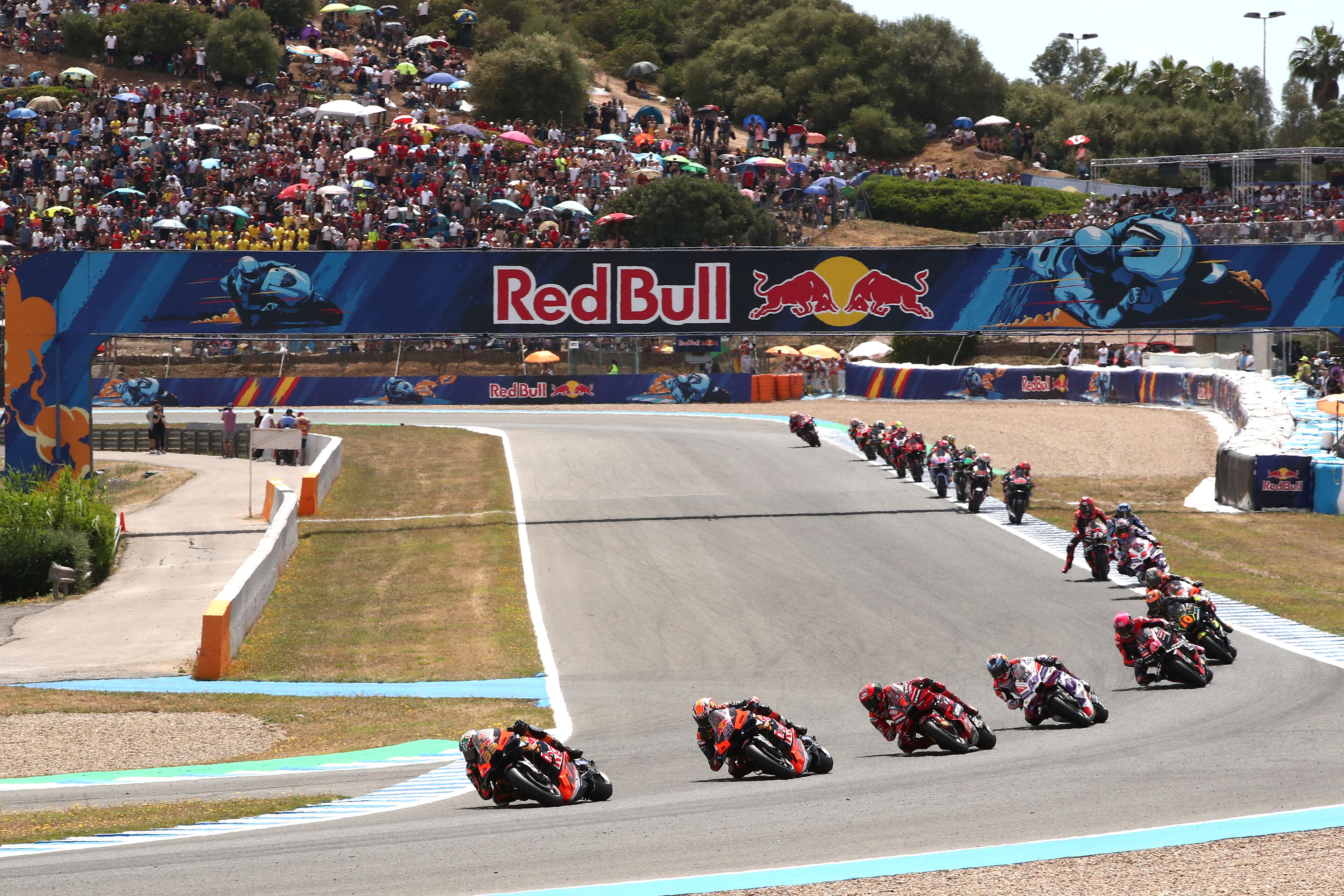
Perhaps the KTMs would’ve been in a similar situation in the scorching heat of Jerez if they’d run more towards the back, picking up more heat and disturbance from the machines ahead. So a crucial point instead is, naturally, how they ended up ahead of the Aprilias to begin with.
In only one of the four starts during the weekend did Espargaro, starting from pole, avoid falling behind the two KTMs even before the Turn 1 braking zone. And even in that start Binder was already through and Miller got the move done under braking. On Vinales’ side, there was one pretty good start – on Sunday – that was undone by the red flag, but it was still not at the level of what the ‘rocketship’ KTMs were managing.
It feels accurate to say that’s an RC16 asset, although both of its riders are also keen to point to the rider factor.
“I think the guys have got launch control working very well – clearly! And starts have always been my strong point as well,” said Binder, adding with a chuckle: “It’s great to have in your pocket, because when you qualify at the back normally, you need a good start.
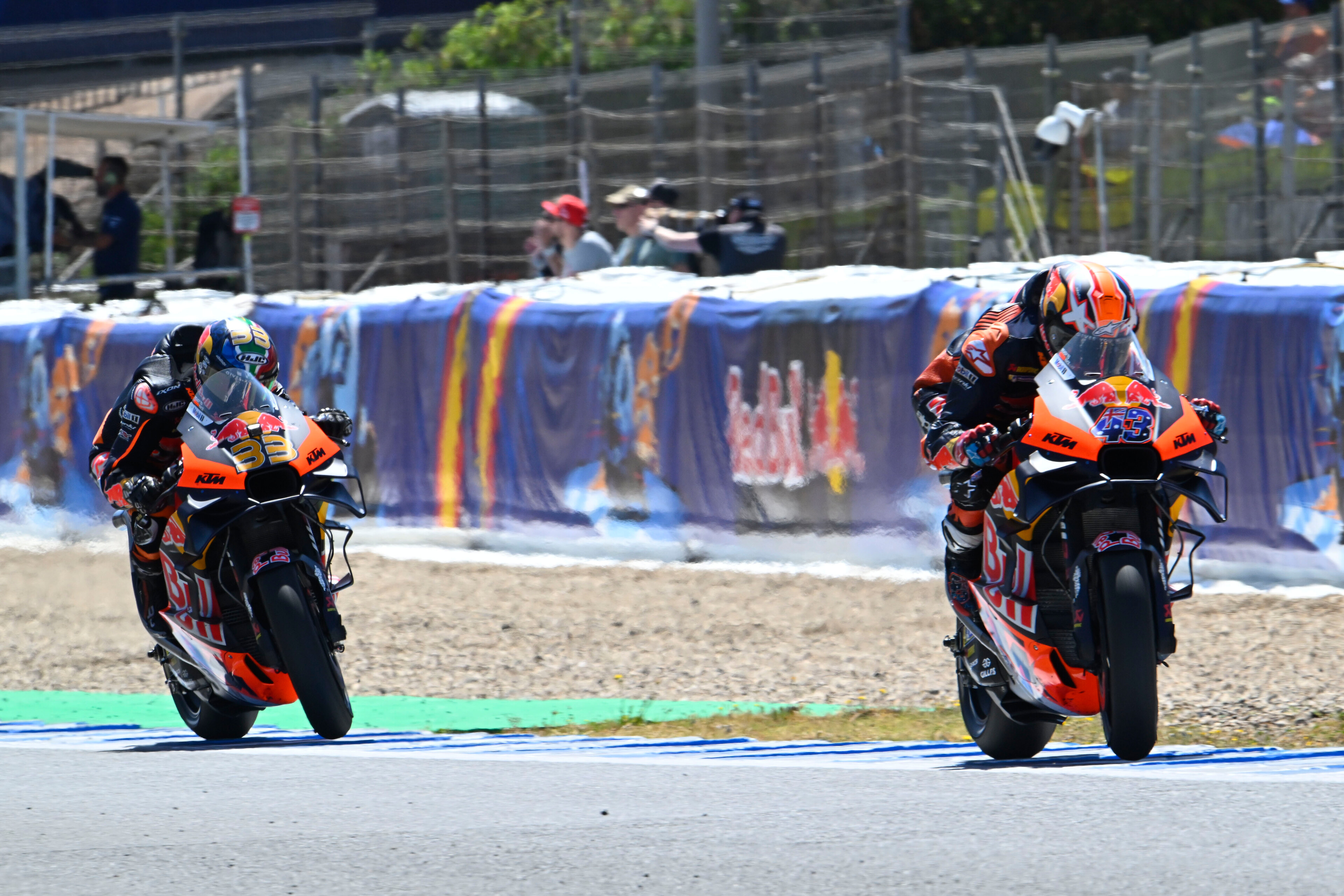
“It’s something I’ve always had to really rely on.”
“The bike works well [off the line]. But some guys get in their head a little bit too much,” said Miller.
“Generally, when I was at Ducati, the same comment. By the same riders. Saying that the Ducati launch device was much better than everyone else’s. And now I’m at KTM and we’re in a similar position, first and second row – generally I knew, when I was on the Ducati, first or second row I could holeshot. It’s not so much about the start itself, it’s your timing and how you approach the start, I think more than anything.
“One guy on the weekend [Espargaro], for example, every single start was more worried [about] me coming up his inside than worrying about his own start. So, if you’re already thinking about what the guy behind you is going to do, you’re at a disadvantage.”
Wherever the credit lies for KTM’s insane launches, it’s clear that Aprilia cannot match them as it is. “It’s a big, big problem,” Espargaro acknowledged.
So, can a bike with these kinds of shortcomings really be better than the current RC16? Well, don’t be surprised if it looks that way again come Friday practice at Le Mans. There is, after all, zero suggestion the RS-GP is actually worse this season than the 2022 version. It is a bike that seems to work at an increasingly wide range of circuits, that is good out of the box, that is both agile and powerful.
Nobody at KTM – particularly not Miller, who has been the loudest cheerleader of KTM’s tech team since arriving – is likely to take kindly to the assertion its bike is somehow inferior, but it’s hard to think that’s what Espargaro meant to convey.
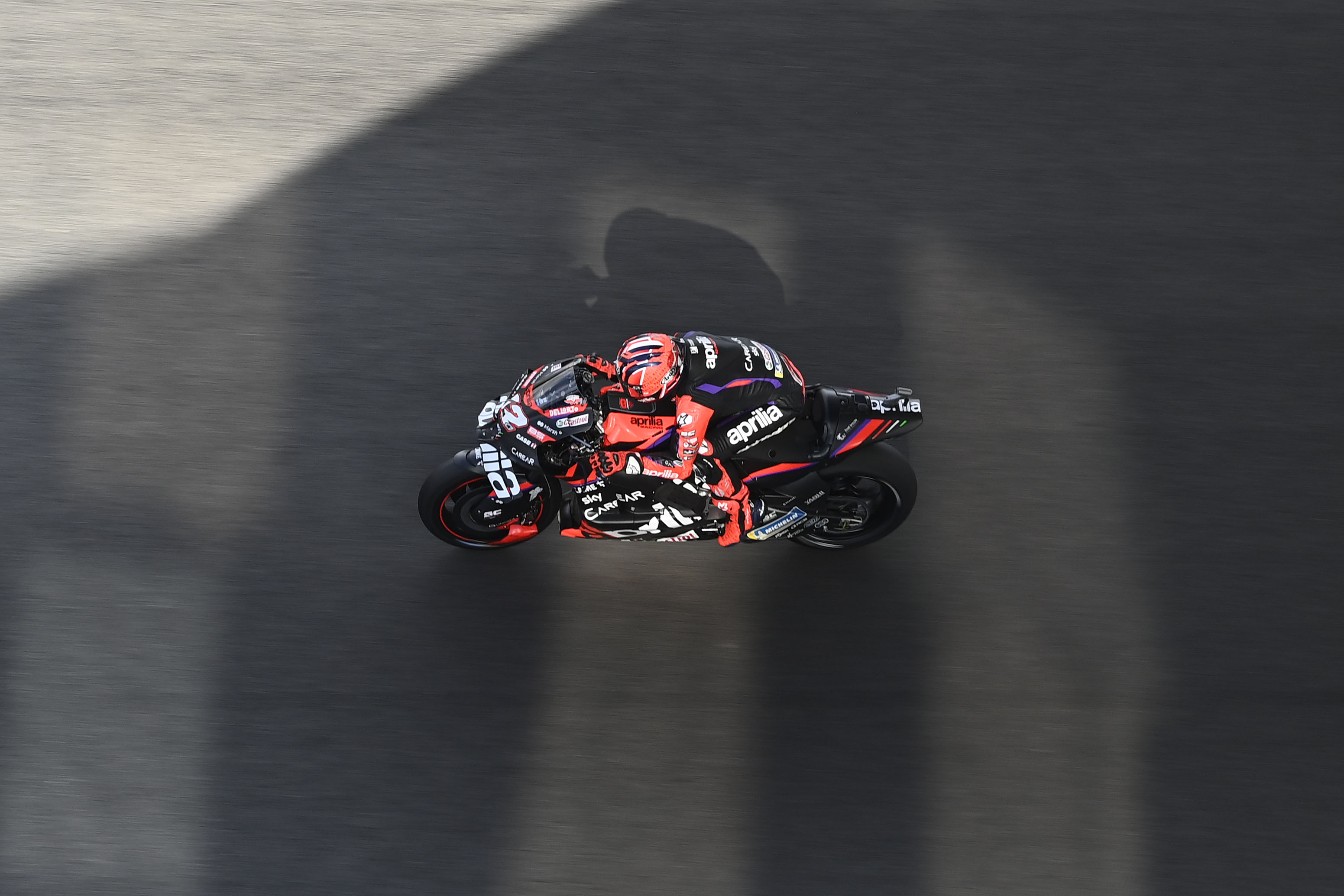
Rather, his suggestion seems to be that the Aprilia has better peak performance than the current KTM, but is not accessing it well enough for various reasons. And perhaps, unlike with KTM, that performance is not robust enough. It also ties into matters of execution – set-up, performance consistency and, say, not having the chain fly off your bike in the final laps – which are hard to fully separate from the overall quality of the package.
Is the 2023 Aprilia a better bike to have than a 2023 KTM if you have a 20-lap empty-track time trial in front of you? The evidence seems decent. And perhaps that is the kind of scenario we think of when we discuss the performance potential of a package.
But as for current MotoGP, as it stands you’d probably rather be a KTM rider right now.






